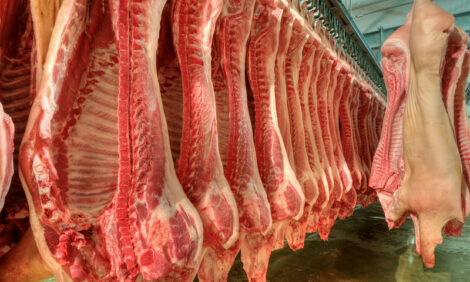



Weekly Outlook:Soybean Prices
URBANA - Even an average soybean price of $5.45 for the year seems high in light of such a large surplus, said a University of Illinois Extension marketing specialist.
"The model correlating the level of year-ending stocks to the marketing year average price suggests a marketing year average price near $5 for this year," said Darrel Good. "Such a low average will not materialize since prices for the reset of the year would have to average near $4, but it appears that there is still a large amount of weather risk reflected in current prices.
"Price declines could be substantial if significant production problems do not surface."
Good's comments came as he reviewed soybean prices. Soybean prices moved sharply higher in December, but gave up much of the gain in the first three weeks of January. A number of factors, he said, will influence price direction over the next several weeks.
Marcy 2006 soybean futures traded to a low of $5.53 in late November 2005 and rallied to a high of $6.33 on Jan. 4. November 2006 futures moved from a low of $5.755 to a high of $6.485 during the same period. Finally, the average cash price of soybeans in central Illinois reached a low of $5.15 in early October 2005, increased to $5.75 by mid-November, declined to $5.40 by the end of November, and rallied to a high of $6.05 on Jan. 4.
"The sharp increase in prices from late November to early January came without an obvious fundamental reason," said Good. "The pace of exports during that period was well below the projected rate for the year, the pace of soybean meal consumption was below the projected rate, soybean oil stocks were growing, and projections of stocks at the end of the current marketing year were increasing.
"Dryness in parts of Argentina was the one supportive fundamental factor. Much of the price strength was attributed to aggressive speculative buying."
Improved weather conditions in Argentina, along with more negative USDA supply and consumption forecasts on Jan. 12, combined to push soybean prices sharply lower so far in January. March 2006 futures declined to a low of $5.64 last week, barely above the late November low. November 2006 futures traded below $5.95, about 55 cents below the early January high, and the average cash price in central Illinois declined to $5.39, 66 1/2 cents below the early January high.
"Price direction over the next several weeks will be influenced by a number of fundamental factors," said Good. "One of those factors will be the development and ultimate size of the South American harvest. Most observers seem to agree that prospects are still in place for a record soybean harvest in Brazil in 2006. The USDA forecast that crop at 2.15 billion bushels, while Brazilian sources put the crop potential at about 2.13 billion.
"Both projections are well above the record production of 1.95 billion bushels last year. More uncertainty centers around the crop in Argentina due to early dryness and periodic episodes of stressful weather."
The USDA currently forecasts the Argentine crop at 1.49 billion bushels, 55 million larger than the 2005 harvest. That forecast may decline a bit, but if the Brazilian crop remains in relatively good condition, total South American projection will likely exceed that of a year ago, Good noted.
"A second fundamental factor important for soybean prices is the pace of Chinese buying of U.S. soybeans," said Good. "China bought at a very rapid pace during the first half of the 2004-05 marketing year, but the pace has been much slower this year."
Through Jan. 12, cumulative shipments of U.S. soybeans to China since Sept. 1, 2005 totaled 189 million bushels, 85 million less than cumulative shipments of a year ago. The USDA also reported that as of Jan. 12, about 60.5 million bushels had been sold to China, but not yet shipped.
"A year ago, those unshipped sales stood at 65.5 million," noted Good. "Large sales to China, however, were reported in the most recent reporting week, renewing optimism that China will accelerate purchases of U.S. soybeans. The window for that increase is fairly narrow as the South American crop will be available in the spring."
A third factor with potential to impact soybean prices is the magnitude of soybean acreage in the United States in 2006, Good added.
U.S. soybean acreage declined by 3.066 million acres from 2005 to 2005, with plantings at the lowest level in seven years.
"Many expect that acreage will increase in 2006 due to escalating costs of corn production," he said. "The dilemma, of course, is that with a large South American harvest and prospects of a 500-million-bushel year-ending inventory in the United States, an increase in acreage is really not needed unless the 2006 U.S. average yield falls well below trend value.
"The USDA will survey producers in March and release the Prospective Plantings report on March 31."
The USDA now forecasts the 2005-06 marketing year average farm price in a range of $5.10 to $5.80. The average during the first five months of the marketing year, with more than 60 percent of the crop likely already priced, will probably be near $5.75.
"To average near the midpoint--$5.45--of the USDA's projected range, the last 40 percent of the crop would need to be sold at an average price of about $5," said Good. "At the close of trade on Jan. 20, the futures market reflected an average cash price for the remainder of the year near $5.60."
Source: ACES News - 23rd January 2006







